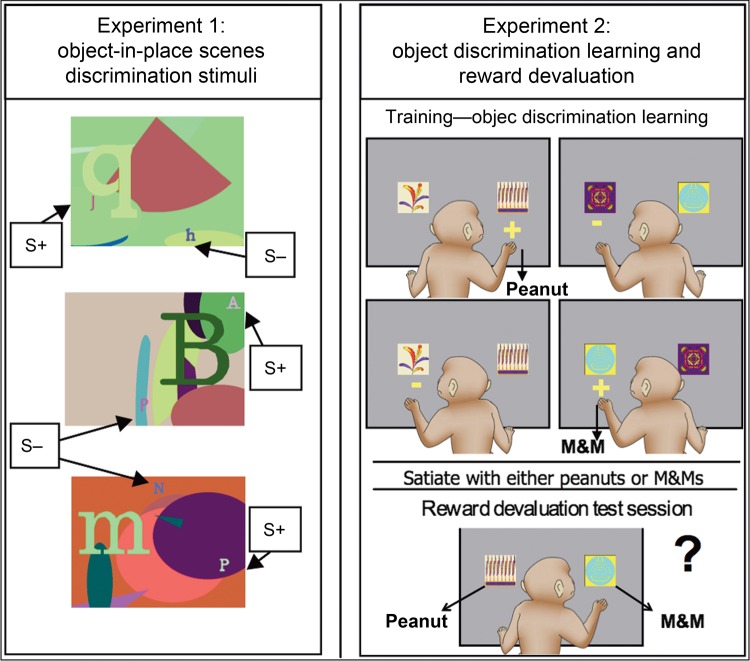Figure 1.
Left: Three examples of object-in-place discrimination stimuli “scenes” used in Experiment 1 in this study. Monkeys respond to each “scene” by touching 1 of the 2 foreground objects. One of the 2 foreground typographic objects in each “scene” denoted by “S+” is arbitrarily designated as correct (reward). The “S−” indicates the locations of the unrewarded foreground objects in each “scene.” The locations and identities of the foreground objects are fixed within each scene but vary across scenes. Right: Object discrimination learning and food devaluation paradigm. During training (object discrimination learning), monkeys are presented with 2 clipart images per trial (60 pairs) and learn which object rewards them with a peanut or an M&M or no reward. After reaching criterion, food reward devaluation is conducted. Monkeys are satiated with 1 food reward just prior to the test session. During devaluation test sessions, pairs of rewarded objects only are presented (30 pairs in total) and the monkey chooses between the 2 objects to receive either a peanut or an M&M reward.

